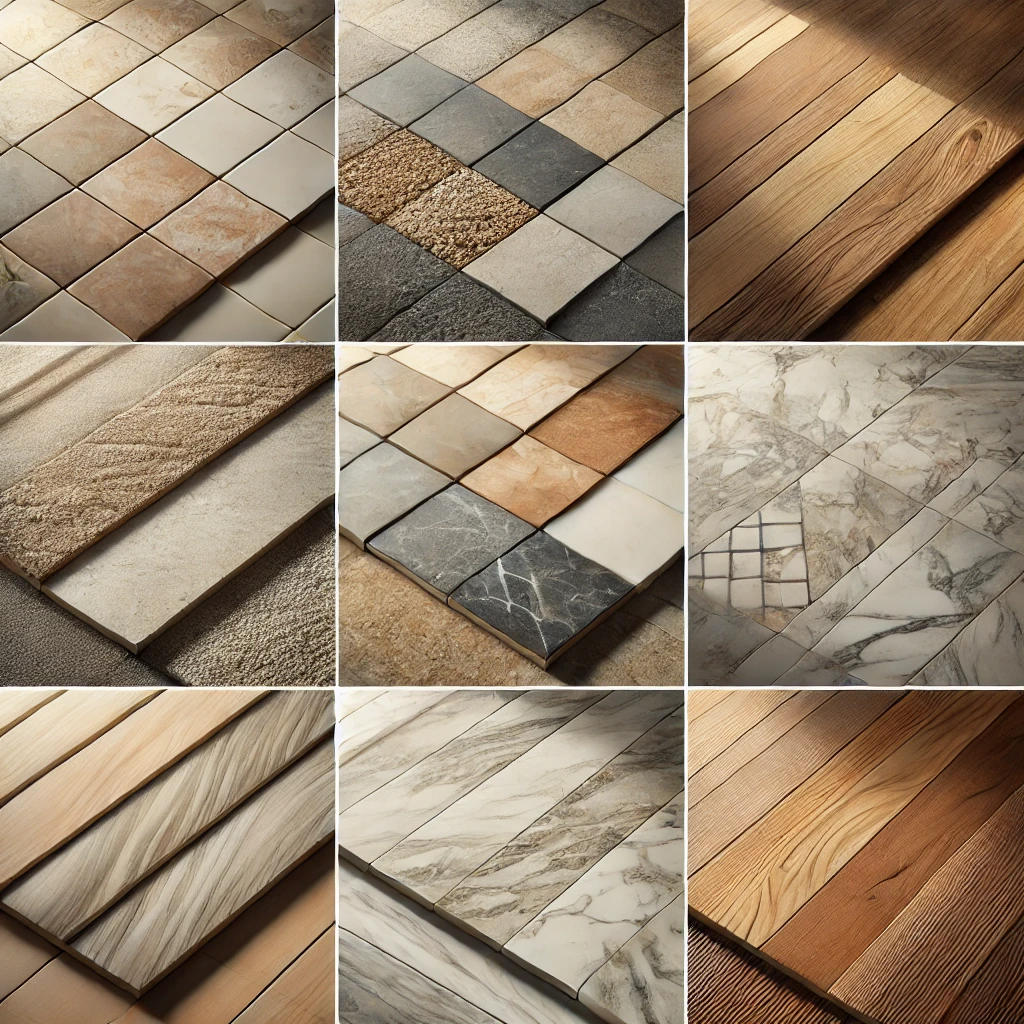Flooring 101: How to Select the Perfect Flooring for Your Home
Selecting the perfect flooring for your home is more than just choosing a design that looks great. Your flooring impacts the overall ambiance, functionality, and even the long-term maintenance of your space. With so many options available, it can be overwhelming to decide which flooring type suits your home best. This guide will walk you through the essential factors to consider when choosing the right flooring for your needs.
1. Assessing Your Home’s Needs
Before diving into the different types of flooring, start by evaluating the specific needs of each room:
- High-Traffic Areas: Spaces like hallways, kitchens, and living rooms experience heavy foot traffic. Durable flooring such as tile, vinyl, or engineered wood can withstand wear and tear.
- Low-Traffic Areas: Bedrooms and home offices can accommodate softer and more delicate flooring options like carpet or hardwood.
- Moisture-Prone Areas: Bathrooms, laundry rooms, and basements require water-resistant flooring like ceramic tile, luxury vinyl, or sealed concrete.
2. Understanding Flooring Material Options
Each flooring material comes with its own benefits and drawbacks. Here’s a breakdown of the most popular choices:
Hardwood Flooring
- Pros: Classic and timeless appearance, adds value to a home, durable when properly maintained.
- Cons: Expensive, prone to scratches, can warp in humid conditions.
- Best For: Living rooms, dining areas, and bedrooms.
Laminate Flooring
- Pros: Affordable, scratch-resistant, mimics the look of real wood, easy to install.
- Cons: Not as durable as hardwood, susceptible to water damage.
- Best For: Bedrooms, living rooms, and hallways.
Vinyl Flooring (Luxury Vinyl Plank & Tile)
- Pros: Water-resistant, budget-friendly, easy to maintain, mimics wood and stone.
- Cons: Can fade over time, lower resale value compared to hardwood.
- Best For: Kitchens, bathrooms, basements, and laundry rooms.
Tile Flooring (Ceramic & Porcelain)
- Pros: Water-resistant, highly durable, available in various styles and patterns.
- Cons: Can be cold underfoot, grout requires maintenance.
- Best For: Bathrooms, kitchens, and entryways.
Carpet Flooring
- Pros: Soft and warm underfoot, noise-reducing, available in various textures and colors.
- Cons: Stains easily, requires frequent vacuuming and professional cleaning.
- Best For: Bedrooms, family rooms, and home offices.
Concrete Flooring
- Pros: Modern aesthetic, extremely durable, customizable with stains and finishes.
- Cons: Hard surface, can be expensive to refinish.
- Best For: Basements, industrial-style homes, and garages.
3. Considering Climate and Environmental Factors
The climate in your region plays a crucial role in flooring longevity:
- Humid Climates: Hardwood may warp, making laminate or tile a more stable option.
- Cold Climates: Carpet and radiant-heated tile flooring help keep spaces warm.
- Sustainable Choices: Consider eco-friendly options like bamboo, cork, or reclaimed wood.
4. Matching Flooring with Home Design
Your flooring should complement your home’s overall aesthetic. Here are some design considerations:
- Modern Homes: Sleek materials like polished concrete, large-format tiles, or light-toned hardwood create a contemporary look.
- Traditional Homes: Warm-toned hardwood or classic tile patterns enhance timeless elegance.
- Rustic or Farmhouse Style: Wide-plank hardwood or distressed laminate fits beautifully.
- Minimalist Homes: Neutral-colored flooring with a matte finish keeps the space simple and clean.
5. Maintenance and Longevity
The right flooring should not only look great but also be easy to maintain:
- Easy Maintenance: Vinyl and laminate require minimal upkeep.
- Durability: Tile and hardwood last for decades with proper care.
- Stain Resistance: Carpet requires regular cleaning, while tile and sealed wood are more resistant to stains.
6. Budget Considerations
Flooring prices vary widely depending on material, installation, and maintenance costs:
- Budget-Friendly: Laminate, vinyl, and ceramic tiles offer affordability with durability.
- Mid-Range: Engineered wood and higher-end vinyl provide a balance of style and cost.
- High-End: Solid hardwood, natural stone, and polished concrete require higher investments but offer longevity and luxury.
7. Installation: DIY or Professional?
- DIY-Friendly Options: Laminate and luxury vinyl planks (LVP) often come with click-lock installation, making them easy for DIYers.
- Professional Installation: Hardwood, tile, and concrete flooring require specialized skills and tools.
Conclusion
Choosing the perfect flooring for your home involves balancing aesthetics, functionality, climate considerations, and budget. Whether you opt for the timeless charm of hardwood, the durability of tile, or the affordability of vinyl, selecting the right flooring enhances both the beauty and practicality of your space. Take your time, assess your home’s needs, and invest in a flooring solution that aligns with your lifestyle. With the right choice, your floors will not only look stunning but also serve your home efficiently for years to come!

